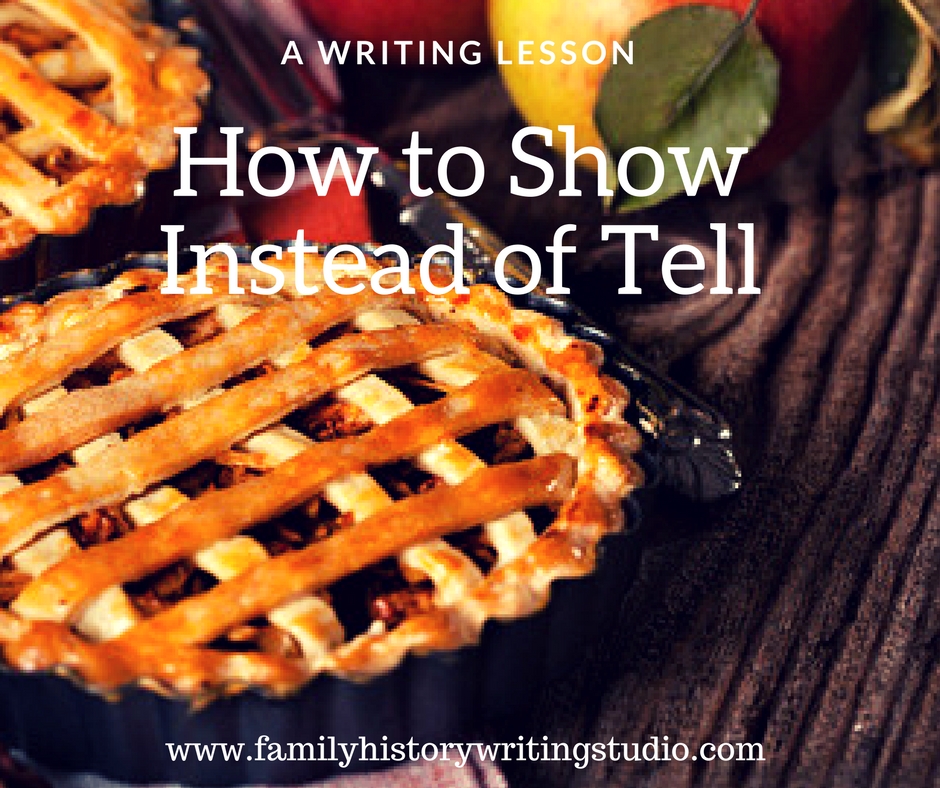We now know that dialogue is an important element to good scene writing.
However, it doesn’t remove our apprehension about using it in our family history stories. It becomes a scary proposition for family historians and often stops many from writing scenes because they don’t want to put words in their ancestor’s mouths. Instead, they settle for dry narrative summary rather than writing an engaging story built on scene and summary.
Dialogue for family historians falls into two camps, which I will refer to as recalled conversations and re-created conversations. First let me start by saying, how you handle dialogue in your family history is a personal decision. Some nonfiction writers believe in no fabrication, while others believe you can put words in your character’s mouth within guidelines. There seems to be a broad range of interpretations on the subject.
Recalled Conversations
My definition of a recalled conversation is when the person or persons were present for the discussion but do not recall the exact words that were exchanged. This could be you writing a memoir or interviewing a relative recalling a conversation. Here’s a few guidelines for recalled conversations.
- You are not expected to remember verbatim what was said, but instead convey the essence of the discussion. If your grandmother is recalling a conversation to you, it is not expected that she would remember the exact words that transpired. However, through your interview she would remember the conversation to the best of her knowledge, capturing the tone and essence of the exchange.
- If you are privy to a conversation, don’t transcribe the conversations word for word. Separate out the important parts. What part is memorable and reveals character and is relevant to the story?
- Conversations do not need to be complete sentences, nor does it need to contain every verbal tic a person might say. You know all those ands, umms and buts, we insert into our vocabulary. The reader does not need to read these.
- Also don’t forget to include setting and body language, which help add to the characterizations behind the words.
Re-Created Conversations
My definition of a re-created dialogue applies to those discussions that took place well in the past, and no one who was present is alive to interview. You may wish to re-create this conversation but here are a few guidelines I follow.
1. Turn to your research to re-create dialogue. I believe you can re-create dialogue that is based on your research and can be summarized and hypothesized base on your ancestor’s actions. I’ve covered the possible resources for re-creating dialogue in a previous post, Re-Creating Dialogue and in Authentic Ancestors.
2. Remain faithful to the essence of what the character would have said and the nature of the conversation.
3. Be honest with the readers, acknowledge when you are re-creating dialogue and when you are recalling.
I’ll also include a link here for those of you who are just learning to write dialogue, 7 Tips to Formatting Dialogue.
I’ve grabbed a couple of books from by bookshelf to offer examples of how other authors have handled the situation.
For example in the memoir , The StovePipe by Bonnie Virag, in her author’s notes she addresses the topic:
I set forth each incident as I remember it, occasionally relying on my sisters to fill in some of the gaps – bearing in mind that each of us saw through a different set of eyes and may have perceived things differently. Some of the dialogue I remember clearly and recount verbatim. Where memory fails me, I created dialogue based on the way my sisters expressed themselves. The rest is as accurate as I can make it. It is the story of my life, and I have tried to be true to my thoughts and memories.
Another example,
Jeannette Walls, Author of Half-Broke Horses
In telling my grandmother’s story, I never aspired to that sort of historical accuracy. I saw the book more in the vein of oral history, a retelling of stories handed down by my family through the years, and undertaken with the storyteller’s traditional liberties. ….she goes on to say
I don’t have the words from Lily herself, and since I have also drawn on my imagination to fill in details that are hazy or missing- and I ‘ve changed a few names to protect people’s privacy – the only honest thing to do is call the book a novel.
Regardless of whether you are recalling dialogue or recreating dialogue the important thing to remember is to be honest with the reader.
Lee Gutkind, creative nonfiction teacher and author of You Can’t Make This Stuff Up, expresses his thoughts and I’ll end with his words
“The idea is to replicate the conversation vividly and to mirror memory and speculation with trust and good judgement.”


